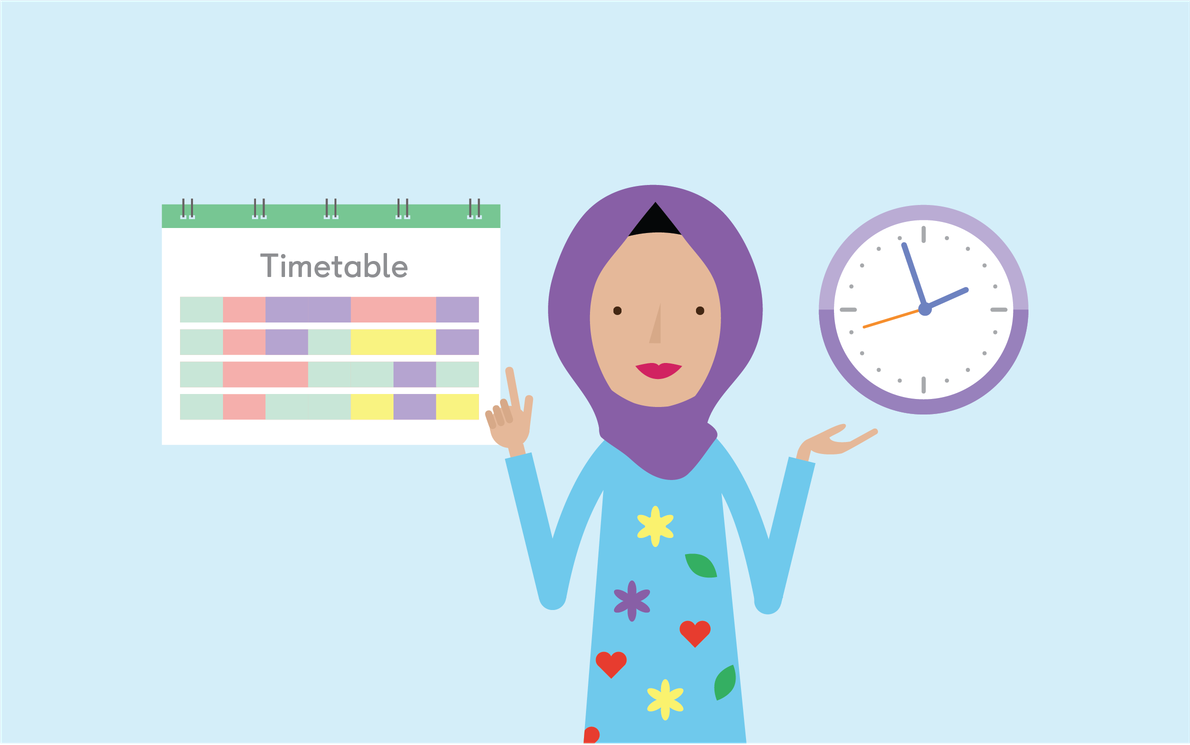Building Better Classroom Routines
Implementing a classroom schedule and routine benefits teachers and pupils alike and is key to optimising learning time.
Are your pupils starting their day prepared to learn? Establishing a positive, predictable classroom environment helps pupils with emotional and social development. It also helps children set expectations, understand boundaries and manage behaviour, all while building a sense of belonging and self-confidence.
Why is routine important?
In episode 25 of the School of School podcast, maths mastery expert Adam Gifford emphasises the need for teachers to establish a classroom routine:
“It’s important for teachers to maximise their time spent with each student because they only have [a certain] number of hours each day to work with that child. Routines are critical in knowing exactly what to do and how to do it, so that students can show up ready to learn.”
Co-host Emily Guille-Marrett agrees. “Children like to know where they’re starting, where they’re going and how the day’s going to end,” she says.
What’s the difference between a schedule and a routine?
Schedules and routines work together to create a clear plan for a class to follow on a daily basis. A schedule outlines the main activities during the school day. The routine breaks down those main activities into simple, concise steps. Reviewing the schedule helps children prepare for what comes next.
Boost Your Practice with FREE CPD
Receive a CPD boost every time you refer a school! Both you and the referred school will earn a full day of CPD and 2 free places on our 3-day Essentials of Teaching Maths Mastery course (valued at £1700).
Get started on helping struggling schools reach maths success now!

Is too much routine a bad thing?
Potentially, yes.
A predictable schedule and step-by-step routines bring consistency and efficiency to the classroom. However, being too rigid about routines can backfire. While teaching to the clock may reduce misbehaviour, it can also limit the opportunities pupils have to engage in imaginative play, exploration, creativity and collaboration. Spontaneous learning can happen anytime during the school day, so it’s important for teachers to recognise this and adapt accordingly.
Tips for creating a balanced routine
Make it visible
Locate the schedule in a prominent spot in the classroom so the whole class can see it. Email a copy to parents. Give older children a hard copy. Give younger children pictures with large print. When pupils can refer to the schedule whenever they need to, it builds confidence because they know what to expect.
Manage expectations
Invest time in classroom procedures with your pupils at the beginning of the year to help set expectations. Define, review and practice routines. Keep the number of steps to a minimum. Once routines are established, pupils should be able to seamlessly transition from one activity to the next. If it isn’t working, re-evaluate at the end of term. Listen and be open to class feedback when reviewing successes and identifying areas for improvement.
Have fun
Routines don’t have to be routine. Have the children pick a song for classroom transitions during the day. Build in special activities and give them descriptive names like ‘Tuesday Trivia’ or ‘Flashback Friday.’ This can provide opportunities for pupils to collaborate, contribute ideas and take responsibility for their own learning.
Summing up
Maintaining flexibility in the regular schedule allows routines to change based on the needs of the pupils. Leave space for impromptu learning and classroom fun. Managing expectations will help to promote positive, confident children, support meaningful connections and maximise time for learning at school.
